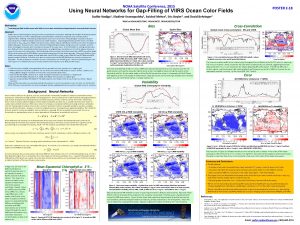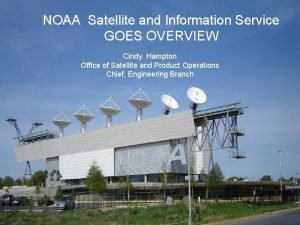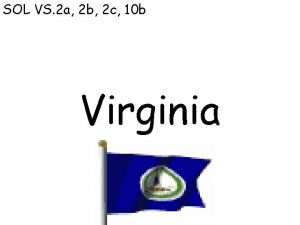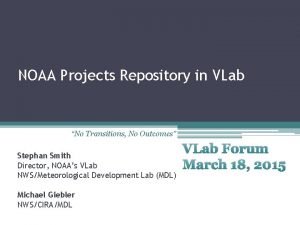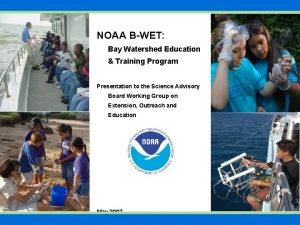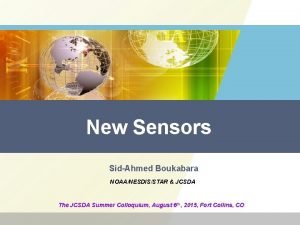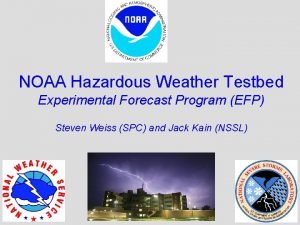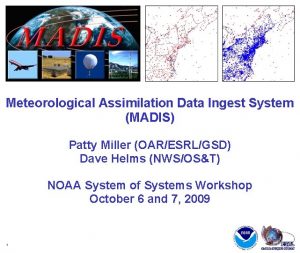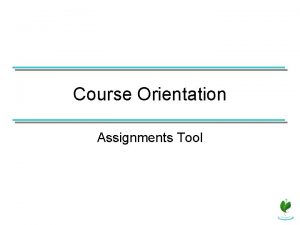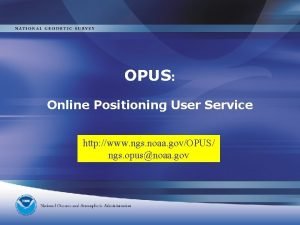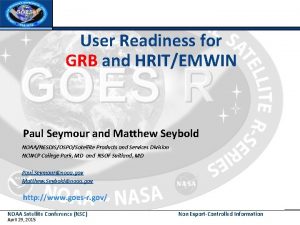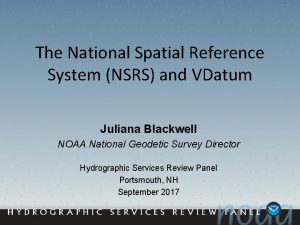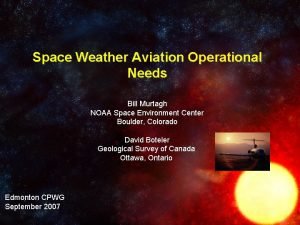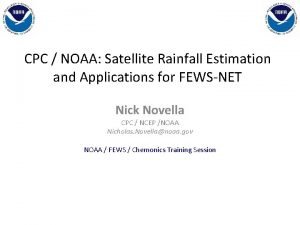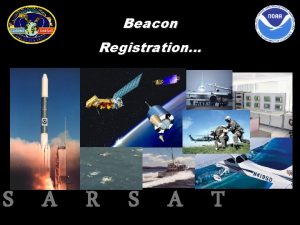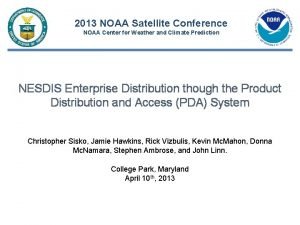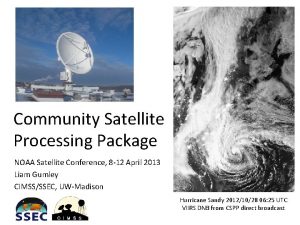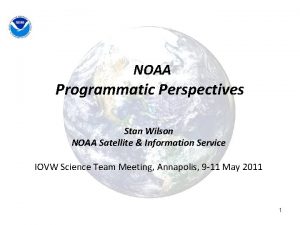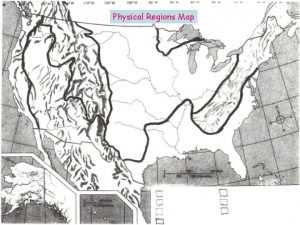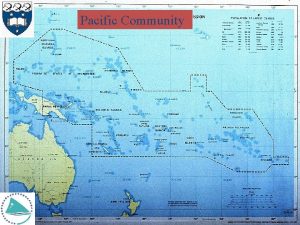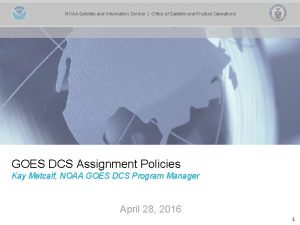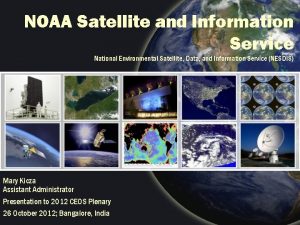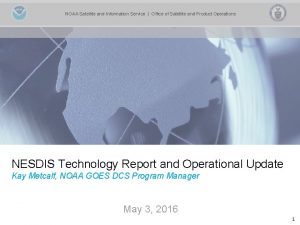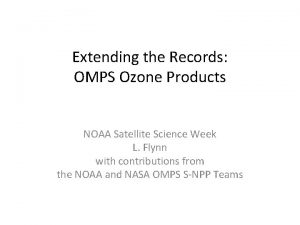NOAA SATELLITE CONFERENCE Pacific Regions Satellite Products Programs


















- Slides: 18

NOAA SATELLITE CONFERENCE Pacific Region's Satellite Products, Programs and Requirements Pacific Region Headquarters Honolulu, Hawaii April 2013

Area of Responsibility 2

Area of Responsibility • Pacific Region – covering > 30 million square miles • • • 2 Weather Forecast Offices 6 Weather Service Offices 2 Data Collection Offices Central Pacific Hurricane Center Pacific Tsunami Warning Center International Tsunami Information Center 3

PR Observing Program • NWS PR supports numerous islands, such as Hawaii, American Samoa, Guam, CNMI, and Micronesia – Satellite Ground Stations (including L/X-band antenna) – Surface and upper air in-situ observations – GPS Sensors • These provide: – Invaluable assistance for our Watch, Warning and Advisory programs – Verification – Support for our daily forecast services 4

PR Observing Program • Challenges – – Communications and infrastructure Limited resources for operations and maintenance Highly corrosive environments Time to travel to remote destinations (limited air and boat service) – High costs for equipment, contracts, travel and shipping – Limited personnel 5

Satellite Ground Stations 6

GOES-W Footprint 7

GOES-W Footprint 8

MTSAT Footprint 9

L/X Band Antenna, Range 10

April 5, 2013 00: 14 UTC Aqua MODIS 11

Atmospheric Rivers 12

It’s not always paradise here 13

UW-CIMSS Cloud Top Cooling Assesses vertical convective cloud growth using cloud top cooling rates based on boxed average 11 micron band brightness temperatures and GOES Imager data

Hawaii Volcanoes SO 2 issues Photograph by M. Poland, November 13, 2008, USGS HVO. 15

Summary • Pacific Region covers a vast area void of observations – Satellite data is vital to our mission • Ground stations located in Hawaii and Guam • Unique region in the NWS in diversity of comms and variety of offices/services • Complex resources reflect a customized and innovative approach to meeting mission requirements 16

PR’s Satellite Future • GEO – Himawari 8/9 data reception uncertainties • Temporal and spatial availability – GOES-R (as GOES-West!) • Antenna costs • Data delivery to American Samoa forecasters • GOES-15 coverage of southern Pacific post GOES-R? • LEO – Model and forecast supplements a very data sparse region – Additional valuable data • OSVW, Altimetry, tropical, etc… 17

Questions Contact: Bill Ward NWS Pacific Region Headquarters Environmental Scientific & Services Division Chief Honolulu, Hawaii Bill. Ward@noaa. gov 808. 532. 6415 18
 Noaa satellite images
Noaa satellite images Noaa satellite images
Noaa satellite images Overview of software engineering
Overview of software engineering State tree
State tree Functional and innovative products
Functional and innovative products Pepsi vs coke marketing strategy
Pepsi vs coke marketing strategy Vlab noaa
Vlab noaa Grants online noaa
Grants online noaa Noaa bwet
Noaa bwet Noaa
Noaa Hazardous weather testbed
Hazardous weather testbed Madis noaa
Madis noaa Noaa corps cpc
Noaa corps cpc Ngs opus
Ngs opus Noaa grb
Noaa grb National spatial reference system
National spatial reference system Bill murtagh noaa
Bill murtagh noaa Cpc noaa
Cpc noaa Beaconregistration noaa gov
Beaconregistration noaa gov
